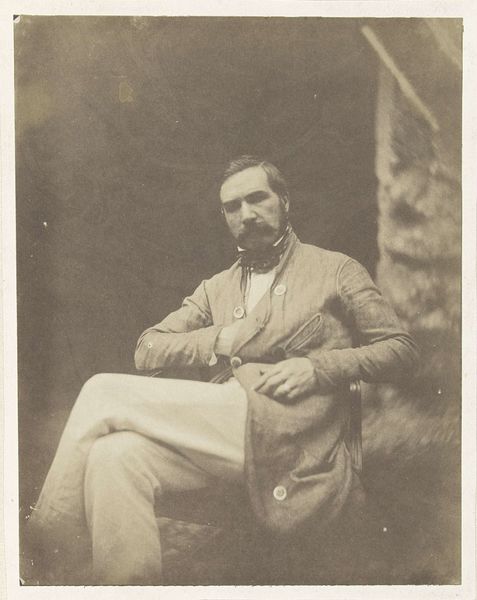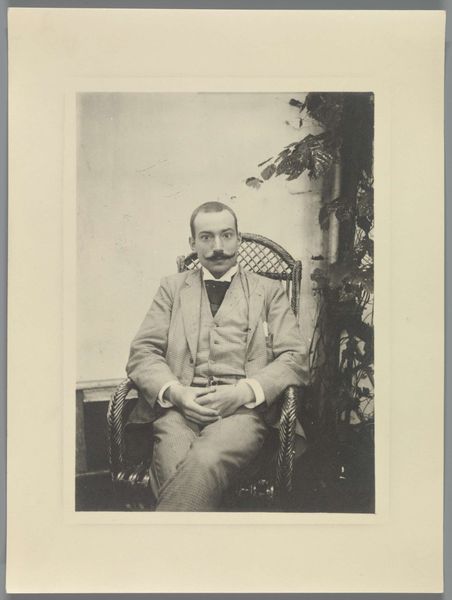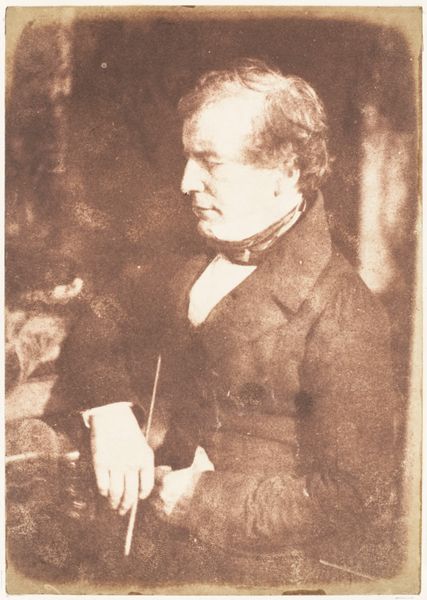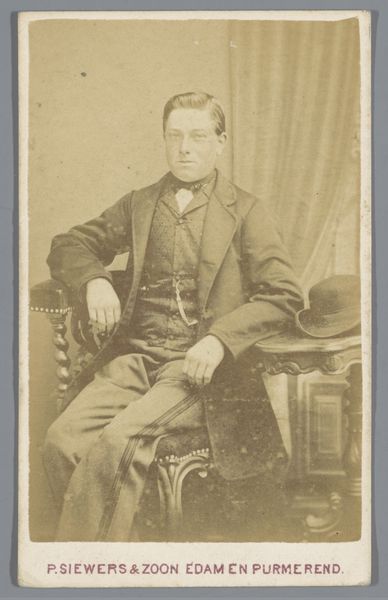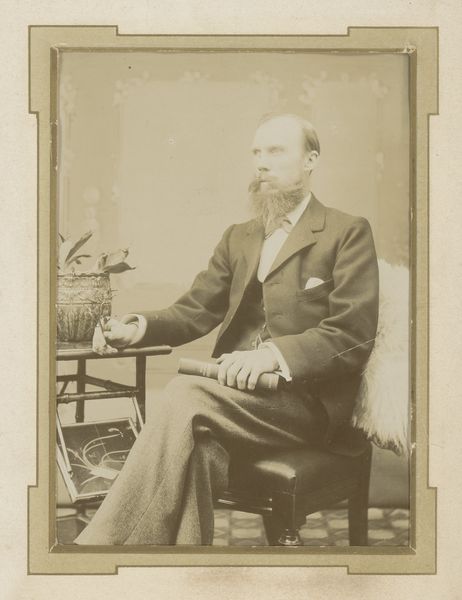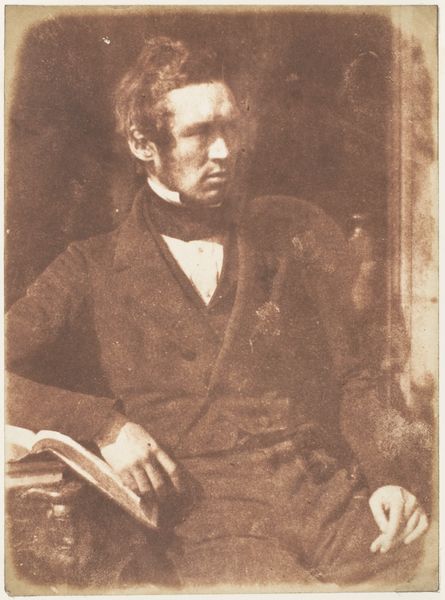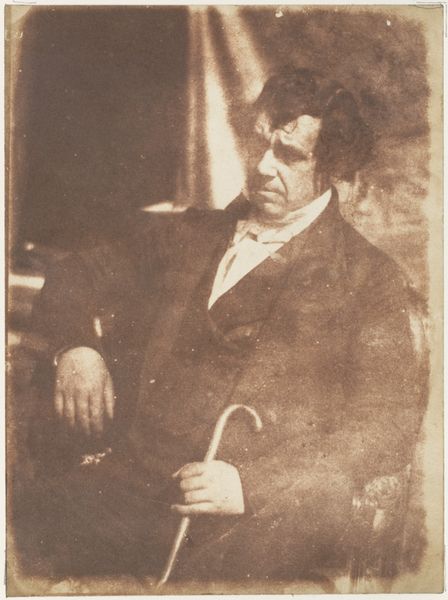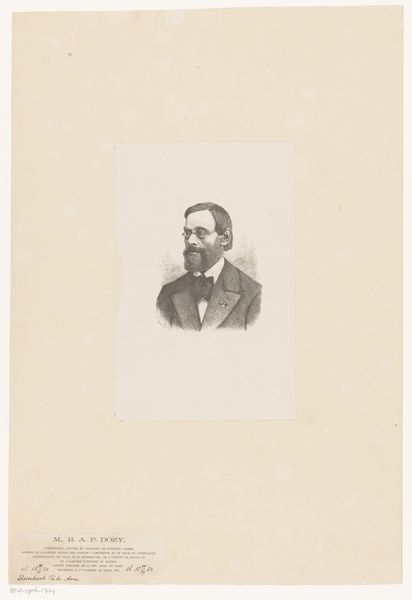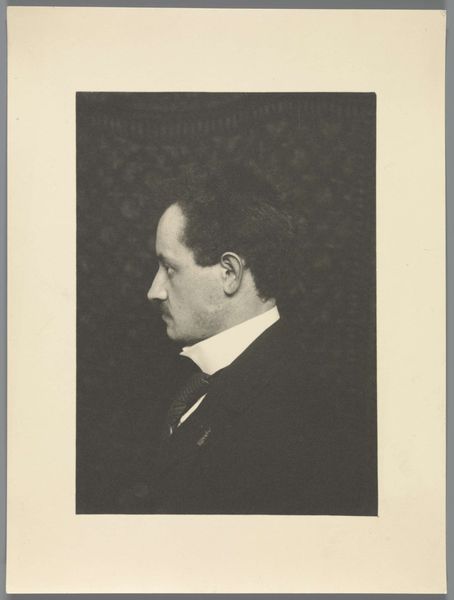
daguerreotype, photography, albumen-print
#
portrait
#
daguerreotype
#
photography
#
historical photography
#
romanticism
#
albumen-print
Copyright: Public Domain
Rev. Dr. William Hamilton Burns, by Hill and Adamson, was made in the 1840s, using a process called calotype. This early photographic technique involved coating paper with silver iodide, exposing it in a camera, and then developing the latent image. What's striking is the way the calotype process impacts the image. The inherent qualities of the paper and chemicals give it a soft, almost dreamlike quality. Unlike later photographic methods, the calotype wasn't about crisp detail; it was more about capturing light and shadow. Think about the amount of labor involved. Each print required careful preparation and handling, making every image unique. Early photography like this wasn't mass production. It was a meticulous craft, requiring both technical skill and artistic vision. Understanding the materials and methods used in this artwork helps us see it not just as a historical record, but as a crafted object, blurring the lines between art, craft, and technology.
Comments
No comments
Be the first to comment and join the conversation on the ultimate creative platform.
